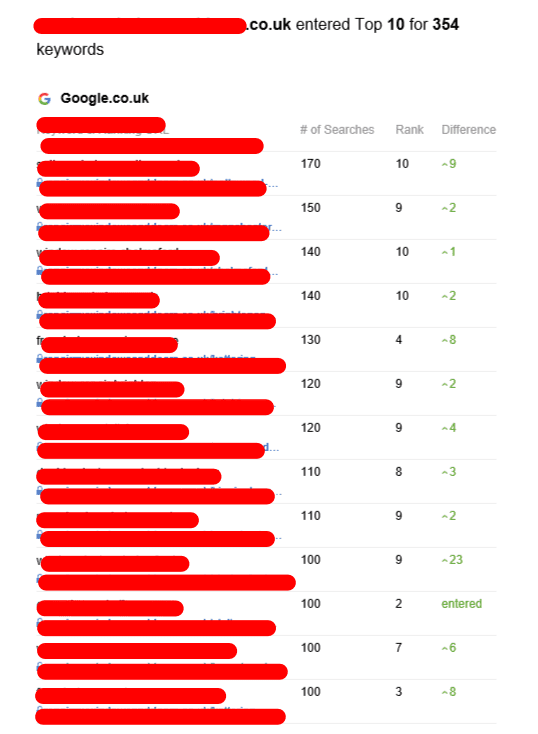Tiered Link Building - How to Avoid a Google Penalty
Tiered link building is a potent tool to help websites increase their rankings in search engines. However it should be used correctly. It could lead to an Google penalty if it is not used correctly.
Tiered link-building consists of the use of multiple levels of backlinks in order to boost a website's ranking. This technique is employed by many SEO experts and link building agencies.

First-tier links
Tiered link building can be an effective SEO technique that can increase your search engine ranking. But, it's crucial to know how to use tiered links properly to avoid penalties from Google. This can be achieved by using tiers within your backlink pyramid. It is also possible to employ other SEO strategies, like breaking links and niche editing building.
The first link in a tiered link-building plan should be from high-quality websites that have a domain authority and PageRank that is higher than your own. This will give you a better chance of ranking over the long term. Links from poor quality websites can affect your rankings and raise red warnings. Avoid linking to websites that are not related or contain only hyperlinks.
Another method to create your first level is by using forum comments and wikis with a lot of user-generated content. This is a great method to obtain high-quality, contextual and relevant links. However, it is important to keep in mind that these links might not be able to pass on the same amount of link juice those from a reputable website.
You can also utilize a tool like HARO to find out which topics journalists are interested in. This can be an excellent way to create your first link tier naturally without breaking any rules. Be sure to only link to sites that are authoritative and relevant to your business.
Second-tier links
Tiered link building is a technique used by site owners and SEO companies to improve search engine rankings. However, it is an unwise strategy that could result in Google penalties. Tiered links are basically backlinks to third-party websites that give authority to your website. These backlinks can be used to transmit link value to your primary web pages so that they can be ranked higher in SERPs. This method is time-consuming and costly. It can also be challenging to get to the tipping point in search results on engines.
Tier two links are generally lower-quality than those in the top tier however, they can help build authority for the domain and increase organic ranking. They also make Tier 1 links more effective by increasing their value. Tier 2 backlinks can be either dofollow or dofollow, but dofollow is the most important importance.
There are a variety of ways to build Tier 2 backlinks, including guest posts and citations in niche-specific articles. In addition you can also utilize article directories and link roundups to create these links. Whichever method you choose to use, it is essential to ensure that the URLs you link to are contextually relevant. It is also important to avoid low-quality hyperlinks, as they could be interpreted by Google as spam. These techniques could quickly transform into a black-hat tactic that can be penalized.
Third-tier links
Link building in an tier system is an effective SEO tool that can help get websites to rank higher on results pages of search engines. However, it can also be risky if it is done incorrectly. If Google detects that you're using tiered links it could penalize your website or remove it from the search engine altogether. There are ways to avoid this fate.
In the third tier, things get more complicated. In this case, marketers employ third-party tools to create backlinks on a large scale. These can include blogs, directories with low quality bookmarking sites, wikis, and other content created by users. These backlinks aim to boost the PageRank and authority of your first-tier link.
what are tier 2 links can be traced to their source and are a bit more risky than organic ones. They're also not as effective in boosting PageRank. Google's algorithm is getting more sophisticated and low-quality sites are losing their value (even if they're nofollow).
Marketers should be cautious when establishing third-tier links in order to avoid these problems. They should only use reputable third-party services with good track history. Also, they should stay clear of automation tools, as these can cause problems. Google may punish you if it discovers automated tools. This can be a major impact on your rankings. It is important to select an SEO agency with experience in tiered link building.
Fourth-tier links
Tiered link building involves creating a pyramid. This method assists in passing link juice from websites with higher authority to websites with lower authority, and can be ranked for specific keywords. This method can increase site traffic and rankings over time. It is essential to remember that using tiered links across your entire website or even a single page may be risky.
To avoid this, you need to ensure that your tier-2 links are from a variety sources. If your tier-2 links are all from one source, Google may detect it and penalize your site. It is also essential to not link to sites that are spammy because this can harm your site's reputation.
In addition to guest blogging, tier 2 links can be obtained via paid advertising or submitting high-quality content to websites. Another alternative is to submit your article to HARO (Help a Reporter Out). This service will send emails on a variety of topics to journalists. You can provide them with the information they need to write their articles.
This method of link-building is not a method that will last. Google's algorithms are constantly changed, and it is becoming more difficult to build links from low-quality sources. Google is also more adept in recognizing links that are automated. Therefore, it is likely that tiered linking will eventually disappear.
